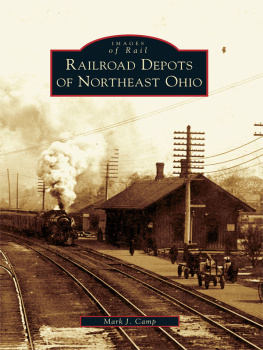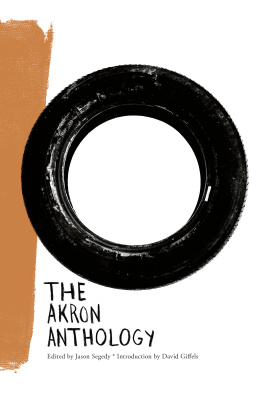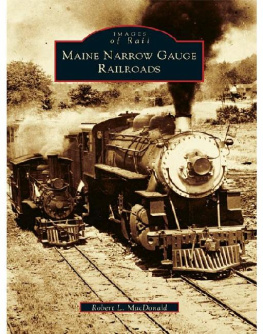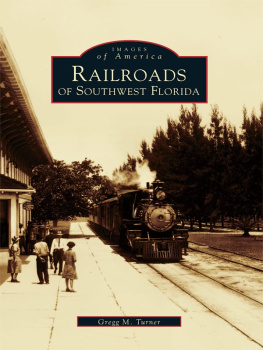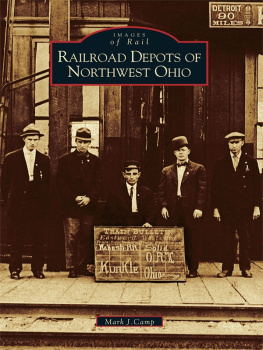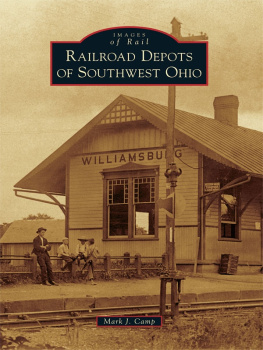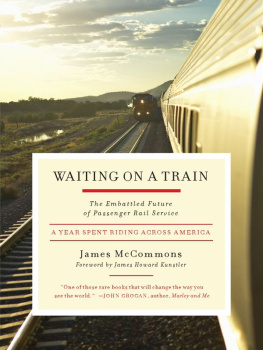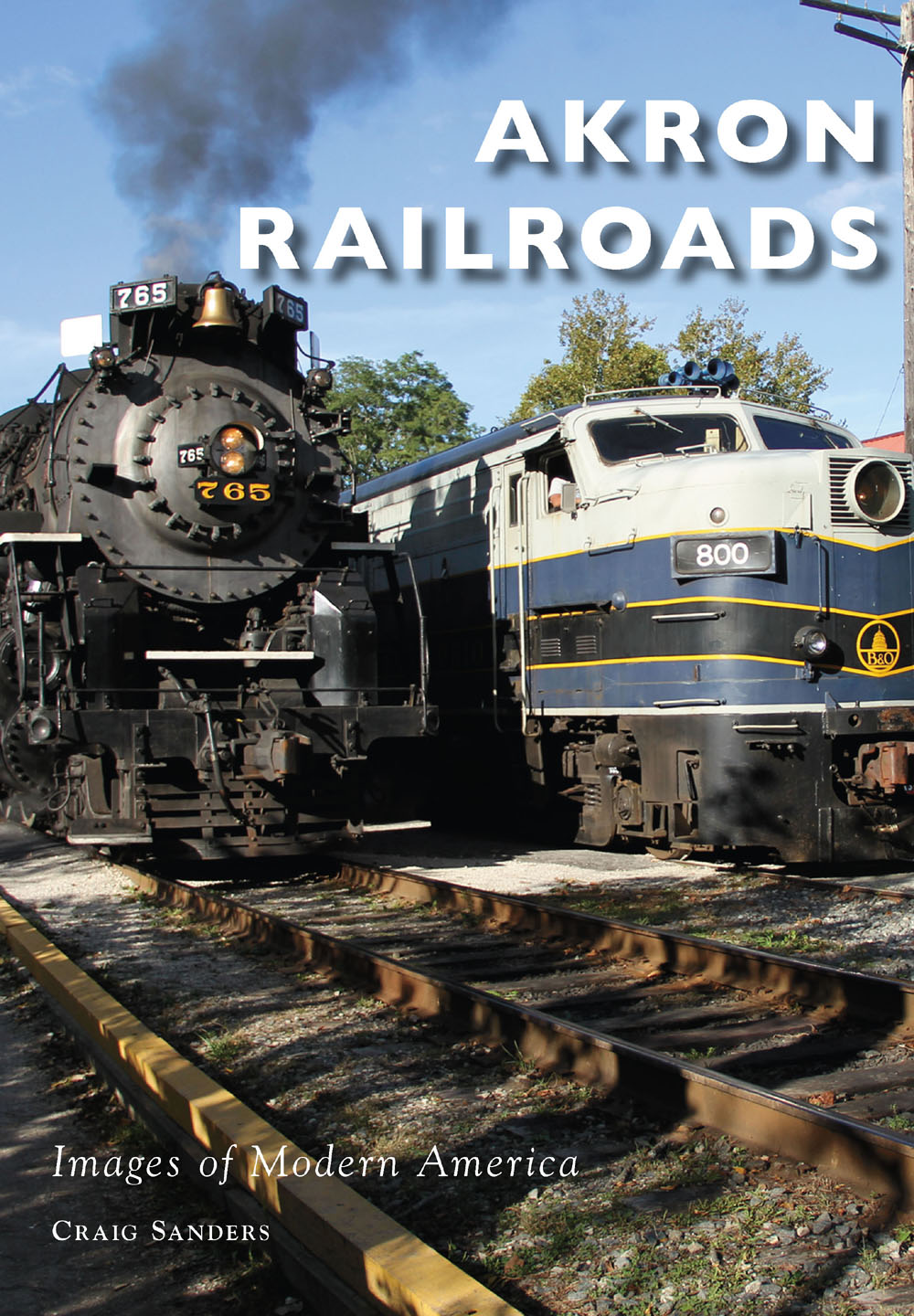
Images of Modern America
AKRON
RAILROADS

An Erie Railroad worker refuels Electro Motive Division E8A No. 823 in Kent. The concrete structure at left contains a telephone used for calling the dispatcher. Semaphore signals were distinct to the Erie Railroad in Northeast Ohio. The post with the number 10 was a guide for engineers to show where to stop a train depending on how many cars the train had. (Photograph by William Surdyk.)
ON THE FRONT COVER: Nickel Plate Road steam locomotive No. 765 was a regular visitor to the Cuyahoga Valley Scenic Railroad (CVSR) each September between 2010 and 2015. It is shown passing a regular CVSR train in Peninsula on September 20, 2015. The 2-8-4 Berkshire-type locomotive is owned by the Fort Wayne Railroad Historical Society and was built in 1944 by Lima Locomotive Works in Lima, Ohio. (Photograph by Craig Sanders.)
ON THE BACK COVER (clockwise from top): A new crew prepares to board an Erie Lackawanna Railway intermodal train in Akron (photograph by John Beach); the Erie Railroads Pacific Express has finished its station work in Kent, and its next stop will be in Akron (photograph by William Surdyk); a crew member sweeps snow out of a switch as a Norfolk & Western Railway train goes to work in southeast Akron (photograph by Roger Durfee); the crew of a Penn Central local stands on the rear platform of a transfer caboose as they watch a local passing a westbound Chessie System train near Voris Street in Akron (photograph by Roger Durfee)
Images of Modern America
AKRON
RAILROADS
CRAIG SANDERS

Copyright 2016 by Craig Sanders
ISBN 978-1-4671-1730-2
Ebook ISBN 9781439657942
Published by Arcadia Publishing
Charleston, South Carolina
Library of Congress Control Number: 2016945087
For all general information, please contact Arcadia Publishing:
Telephone 843-853-2070
Fax 843-853-0044
E-mail
For customer service and orders:
Toll-Free 1-888-313-2665
Visit us on the Internet at www.arcadiapublishing.com
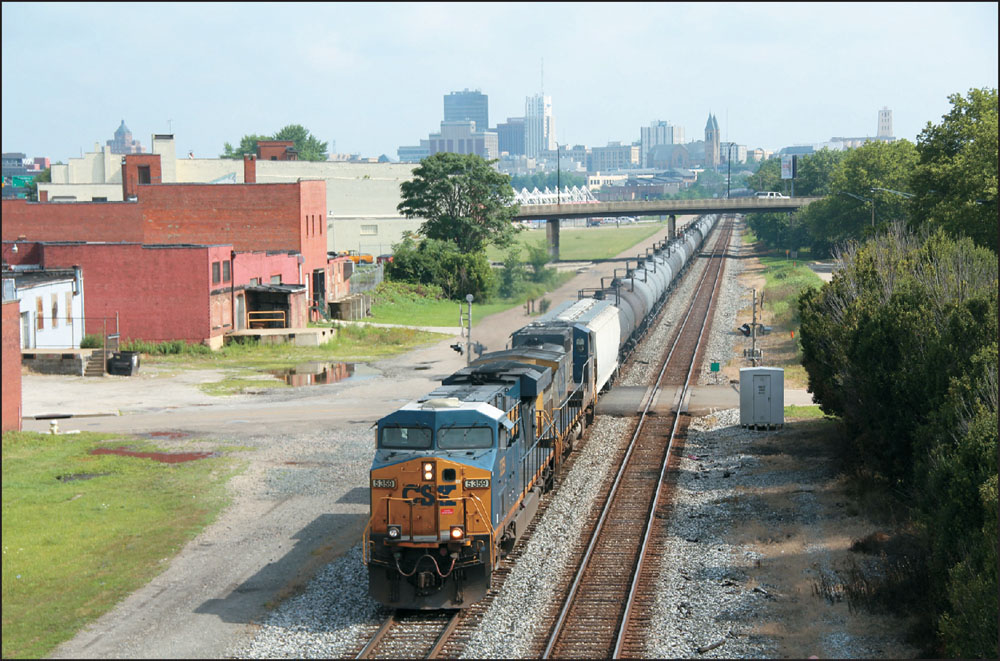
The downtown Akron skyline looms behind a westbound CSX train carrying tank cars loaded with ethanol and preparing to pass beneath Interstate 76/77. The train is crossing Voris Street. At one time, the Erie, Baltimore & Ohio, and Pennsylvania Railroads had tracks here. The Erie had its freight yard to the left of the bridge carrying Thornton Street over the tracks in the background. (Photograph by Craig Sanders.)
CONTENTS
ACKNOWLEDGMENTS
Akron Railroads is a review of railroad operations in Akron, Ohio, and the surrounding region from 1960 to present. During this era, the railroads serving Akron and the nation went through several periods of change and transformation before settling into a time of relative stability and prosperity. The era saw some of the best and some of the worst of railroading. This book was created to supplement as well as follow up on a work of the same title published by Arcadia Publishing in 2007. This book provides a range of images that convey a sense of the change that occurred while being representative of what railroad operations in Akron looked like during an era that seemed to be ever-changing with a diverse offering of locomotives and rolling stock of many colors, markings, and owners. I was able to create this book because of the contributions made by members of the Akron Railroad Club (ARRC). I wish to thank club members Richard Antibus, John Beach, Peter Bowler, Robert Farkas, Roger Durfee, Jim Mastromatteo, Edward Ribinskas, Marty Surdyk, and Paul Woodring for graciously allowing me to use their photographs. They gave me access to far more images then I was able to use, and I could have easily filled two or three books with their offerings; it was a lot of fun to look at those photographs. I want to give a special thanks to Roger for providing information about railroad operations in Akron. Tom Goughnour brought a sign from Akron Union Depot to an ARRC meeting for me to photograph. I also wish to thank Stacia Bannerman, senior title manager, and Alex Sharp, acquisitions editor, at Arcadia Publishing for their assistance in helping me shepherd this project to completion. Above all, I cannot thank my wife, Mary Ann Whitley, enough for copyediting the manuscript and providing encouragement throughout the project. This book would not have been possible without that. The responsibility for any errors or omissions lies solely with the author.
RAILROAD ABBREVIATIONS
Akron & Barberton Belt (A&BB)
Akron Barberton Cluster (ABC)
Akron, Canton & Youngstown (AC&Y)
Baltimore & Ohio (B&O)
Chesapeake & Ohio (C&O)
CSX Transportation (CSX/CSXT)
Cuyahoga Valley Line (CVL)/Cuyahoga Valley Scenic Railroad (CVSR)
Denver & Rio Grande Western (D&RGW)
Erie Lackawanna (EL)
New York Central System (NYC)
New York, Chicago & St. Louis/Nickel Plate Road (NKP)
Norfolk & Western (N&W)
Norfolk Southern (NS)
Penn Central (PC)
Pennsylvania Railroad (PRR)
Wheeling & Lake Erie (W&LE)
INTRODUCTION
At the dawn of the seventh decade of the 20th century, the railroad industry was in deep trouble. Passenger service was in decline, and there was talk that it might be gone by the end of the 1960s. Railroads were losing freight business to trucks, pipelines, and water carriers, and by 1955, the percentage of the nations freight hauled by railroads had dropped below 50 percent.
Richard L. Saunders Jr., author of Merging Lines: American Railroads, 19001970, described the 1950s and 1960s as the crying towel era. Despite a booming economy, much of the railroad industry was managing only to survive.
Railroads had more track capacity than they needed for the business they had, particularly in the eastern United States. Mergers could bring about economies of scale and eliminate parallel routes and redundant service facilities.
Among the earliest mergers was the October 17, 1960, union of the Erie Railroad and the Delaware, Lackawanna & Western Railroad, which gave rise to the Erie Lackawanna Railroad.
On February 4, 1963, the Chesapeake & Ohio Railway took control of the Baltimore & Ohio Railroad. They shared a common management but continued to operate under their own identities. The C&O won control of the B&O by besting the New York Central System, which had approached the C&O and B&O about a three-way merger in 1959.
Rebuffed by the C&O, in 1961, the NYC resumed merger talks with its chief rival, the Pennsylvania Railroad. The two had announced in 1957 that they were contemplating merging, but those efforts had been called off in 1958. After years of regulatory and legal review, the PRR-NYC merger was consummated on February 1, 1968, as the Penn Central Transportation Company.
The New York, Chicago & St. Louis Railroad (also known as Nickel Plate Road) had acquired Ohio-based Wheeling & Lake Erie Railway in late 1949. Fearing a combined PRR and NYC could ruin it, the NKP sought a merger partner. The Norfolk & Western Railway saw the NKP as a conduit to extend its coal-hauling business into the Midwest. The merger took effect on October 16, 1964, and also involved the N&W acquiring the Akron, Canton & Youngstown Railroad.
Next page

